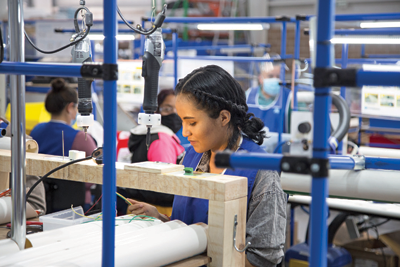Inside a Mexico Manufacturing Wire Harness Operation
By: JP McDaris, Business Development Director, Entrada Group – www.entradagroup.com
Before the wire harness sector can fully recover from COVID-19 and its aftermath, one major obstacle has to be overcome: labor. Worker shortages across the country have been exacerbated by the pandemic and show no signs of abating anytime soon.
In fact, they’re likely to get worse. As much as a quarter of the US manufacturing workforce is over 55 years old. A massive wave of Baby Boomer retirements will leave nearly 3 million vacancies in the labor supply, including at many skilled positions. Competition for limited workers, combined with the push for $15+ minimum wage in many states, will make labor exorbitantly expensive in coming years. Even if wire harness producers are willing to pay, there’s no certainty they can fill all the roles they need. For instance, in Entrada’s recent webinar with our partner Wire & Cable Technology International, participating executives from the wire harness sector listed “access to labor” as the top issue keeping them up at night.
The simple fact is that an affordable army of workers trained in wire harness assembly won’t appear overnight (or within the decade). At least not in the US. Recognizing that labor shortages will only get worse before they get better, a forward-thinking group of executives decided to take action.


